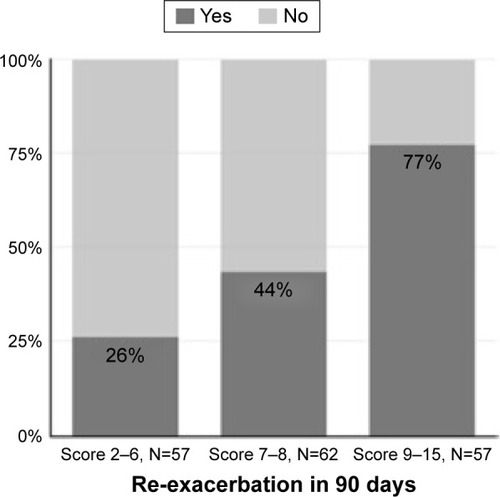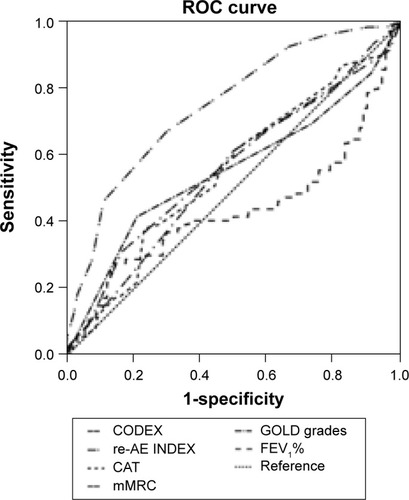Figures & data
Table 1 Characteristics of the patients according to whether they had re-exacerbation
Table 2 Risk of re-exacerbation by univariate logistic regression analysis
Table 3 Variables and point values used for the computation of the re-AE INDEX
Table 4 Risk of re-exacerbation for re-AE INDEX by multivariate logistic regression analysis
Figure 1 The relationship between the rate of re-exacerbation and the re-AE INDEX scores.
Abbreviation: Re-AE INDEX, re-exacerbation index.

Table 5 Comparison of predictive capacity of re-exacerbation among indexes and single variables by C-statistics
Figure 2 ROC curves for the re-AE INDEX, CODEX, GOLD grades, mMRC, CAT, and FEV1%.
Abbreviations: ROC, receiver operating characteristic; Re-AE INDEX, re-exacerbation index; CODEX, comorbidity, obstruction, dyspnea, and previous severe exacerbations; GOLD, Global initiative for chronic Obstructive Lung Disease in stable COPD; mMRC, modified Medical Research Council scale in stable COPD; CAT, COPD assessment test in stable COPD; FEV1%, forced expiratory volume in 1 second percent of predicted in stable COPD.

